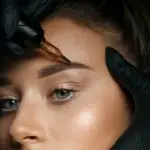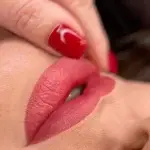Matching your skin tone to the perfect permanent makeup (PMU) pigment is essential for achieving natural, flattering, and long-lasting results. At Beauty Planet – Permanent Makeup, we specialize in helping clients choose pigments that complement their unique undertones, skin types, and lifestyle needs. Whether you’re considering microblading, lip blush, or eyeliner enhancement, understanding the science and art behind pigment selection ensures you’ll love the results today—and for years to come.
In this comprehensive guide, we’ll walk you through identifying your skin tone and undertone, understanding how pigment colors work, and how to avoid common mismatches. Let’s get started.
The Foundation: Skin Tone vs. Undertone
To find your perfect PMU pigment, you need to know the difference between skin tone and undertone:
- Skin Tone refers to the surface color of your skin (fair, medium, tan, deep).
- Undertone is the subtle hue beneath your skin’s surface (cool, warm, or neutral).
Knowing both helps PMU artists select a pigment that won’t fade unnaturally or heal to an undesirable tone.
How to Identify Your Undertone
- Cool Undertones: You may notice pink, red, or blue hues in your skin. Veins appear blue or purple.
- Warm Undertones: Yellow, peach, or golden hues. Veins appear greenish.
- Neutral Undertones: A balance between warm and cool. Veins may appear blue-green.
Pro Tip: Use natural lighting to assess your undertone for the most accurate results.
PMU Pigment Basics: What You Need to Know
PMU pigments come in a variety of base colors and undertones to complement different complexions. The goal is to choose a pigment that:
- Complements your natural undertone
- Heals evenly over time
- Resists fading to red, gray, or blue
Here’s how to match pigment tone with skin undertone:
| Skin Undertone | Recommended Pigment Undertone | Typical PMU Colors |
| Cool | Warm or neutral | Golden brown, caramel |
| Warm | Cool or neutral | Ash brown, taupe |
| Neutral | Neutral | Medium brown, auburn |
Customization Is Key
PMU artists often mix pigments or use modifiers to perfect the tone. This ensures the pigment works not just with your skin tone, but also with the unique way your skin heals and retains color.
The Fitzpatrick Skin Type Scale
The Fitzpatrick Scale is a classification system that helps PMU artists determine how your skin will react to pigment and sun exposure.
| Type | Description | Best Pigment Choice |
| I | Very fair, burns easily | Light blonde, golden tones |
| II | Fair, burns sometimes | Golden, soft brown |
| III | Light-medium, tans gradually | Medium brown, neutral tones |
| IV | Olive or tan, tans easily | Darker browns, cooler tones |
| V | Brown skin | Rich browns with warm base |
| VI | Very dark skin | Deep browns, high saturation |
Pro Tip: Darker skin types require pigments with higher saturation to prevent ashy results.
Factors That Influence PMU Pigment Results
Even the perfect pigment can heal differently depending on individual factors. Here’s what affects your results:
Skin Type
- Oily Skin: Tends to reject pigment more easily; results may blur or fade faster.
- Dry Skin: Generally retains pigment well and heals crisply.
- Aging Skin: Thin or textured skin may heal unpredictably and require gentler techniques.
Environmental & Lifestyle Factors
- Sun Exposure: Accelerates fading and pigment change.
- Skincare Products: Acids and retinoids can prematurely fade pigment.
- Medications: Certain medications and hormonal changes can impact healing.
Things to Know Before Choosing Your PMU Pigment
Before committing to a pigment:
- Consult a Licensed Artist: They can properly evaluate your skin tone, undertone, and medical history.
- Review Your Skincare Routine: Products with glycolic acid, retinol, and Vitamin C may interfere with pigment retention.
- Consider Prior Work: Old or faded microblading or PMU can affect new pigment visibility.
- Perform a Patch Test: This ensures no allergic reactions to the pigment.
- Understand Healing Phases: Color may appear darker at first, then fade into its true tone over 4–6 weeks.
Trending Topics in Pigment Selection
Common Client Questions
Will it turn orange, red, or blue?
Only if the pigment is wrong for your undertone or applied at the wrong depth.
Why does my pigment fade faster?
Oily skin, sun exposure, or improper aftercare are usually the cause.
Can I change my pigment color later?
Yes! Corrections and color adjustments are possible through color theory.
What’s New in PMU Pigment Formulas?
- New-generation pigments are now:
- Vegan & cruelty-free
- MRI-safe
- Longer lasting with stable healing tones
Bonus Tips for a Flawless Match
- Take clear photos in daylight if doing a virtual consultation.
- Avoid alcohol and caffeine 24 hours before your appointment for better healing.
- Follow all pre-care and aftercare instructions—this dramatically affects final color.
Why Choose Beauty Planet for Your PMU?
At Beauty Planet – Permanent Makeup, we specialize in precision pigment matching for every skin tone and undertone. With years of experience and access to the latest PMU technologies, we offer:
- Customized consultations with skin and undertone analysis
- Safe, high-quality pigments that retain color beautifully
- Tailored application techniques for every skin type
We believe that your PMU should enhance your natural beauty—not overpower it. With our professional approach and personalized care, you’ll walk out feeling confident and refreshed.
Ready to Achieve Natural-Looking, Long-Lasting Results?
Take the first step toward your perfect PMU transformation. Schedule a consultation with Beauty Planet to get a customized pigment match and treatment plan.
Contact Us Today
Phone: 856-702-BROW
Email: beautyplanetpermanent@gmail.com
Your PMU Questions Answered by Beauty Planet
What happens if my pigment heals too dark or light?
Adjustments can be made during your touch-up. The initial session lays the foundation; refinement happens next.
Is it possible to be between undertones?
Yes—neutral undertones often exhibit both warm and cool tones. Artists use custom blends to match.
Will my pigment look natural over time?
Yes, if matched correctly to your undertone and maintained properly.
How do I prevent pigment from fading unevenly?
Protect it from sun, avoid exfoliants, and follow your artist’s aftercare plan.
What if I have melanin-rich skin?
We use high-saturation pigments and advanced techniques to avoid grey/ashy healing.






